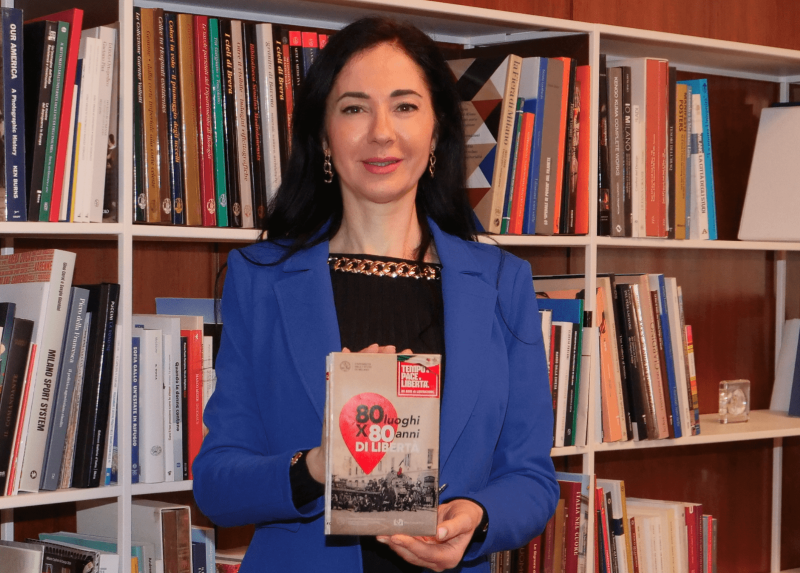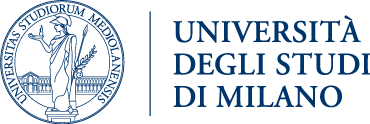"80 Luoghi per 80 Anni di Libertà" is the name of the map created by the "Federico Chabod" Department of Historical Studies of the University of Milan to celebrate the 80th anniversary of Italy's liberation from Nazi-Fascism. The map was created in collaboration with the Municipality of Milan as part of a series of events and initiatives called "Tempo di Pace e Libertà. Ottanta Anni di Liberazione" (Time of Peace and Freedom. Eighty Years from the Liberation), organised within the programme "Milano è Memoria" (Milan is Memory).
The map is available in paper, digital and interactive format, and offers the opportunity to explore Milan and the places we see every day with curious and investigative eyes, and discover, through its streets and squares, the inner history of the city.
Together with Marco Rota (PhD graduate in Historical Studies), Samuele Chiodelli and Simone Girardi (students of the Master's degree in Historical Sciences), we visited some of these historical places, to illustrate them in a video we made on the occasion of 25 April, Italy's Liberation Day. These places look different now, compared to 80 years ago; yet, we can still experience them, by exercising our right and duty to cultivate their memory. We hope that, through this map, people can explore the city (not only during these days of celebrations) and maybe realise that one of these 80 places where history left its mark is actually close to their home or workplace.

Rector Marina Brambilla with the map "80 Luoghi per 80 Anni di Libertà"
Rector Marina Brambilla stated: "This project is an opportunity to affirm, once again, the character and identity of Milan, the real protagonist of those days. An opportunity, for all of us, to retrace those moments, to know the names and surnames of the people who lived at that time, so that we won't miss a single part of that history, and we can renew our commitment to justice, freedom and peace in our everyday life. Our map brings together stories of suffering, courage, opposition to subjugation and heroism. It is our duty to remember these stories and pass them down, especially to young generations, who ought to know not only the importance, but also the price of that hard-earned freedom. Our map is a tribute to the many courageous citizens of Milan who would bring freedom, rights, and social, civil and economic development to the city in the decades to come: a heritage that we cannot take for granted, as it is not immune to change. For this reason, we must protect, develop and share these values."
The 80 places, one for each year since 25 April 1945, are grouped into seven thematic areas, to represent the historical events which marked the period between 1943 and 1945. The goal is to retrace what the city lived through day after day until the liberation. These areas are: Italian Social Republic; Germans; Bombings; Persecutions and Deportations; Reprisal; Resistance and Partisans; Insurrection.
The project is coordinated by professors Daniela Saresella and Paolo Zanini, and edited by Alina Binaghi, Stefano Latino and Marco Rota (University of Milan). The map is the result of contributions by professors Marco Cuzzi, Paolo Zanini, Massimo Baioni and Claudia Baldoli of the University of Milan, and professor Barbara Bracco of the University of Milan-Bicocca. The graphic design was developed by Elena Botta (Communication and Institutional Events Division).
The map is available in paper format at every library and civic centre of the nine municipalities of Milan, as well as at local museums, schools and universities. Other places include the Milan offices of ANPI (the National Association of Italian Partisans), ANED (National Association of ex-Deportees into the Nazi Camps), Fondazione Giangiacomo Feltrinelli, the Istituto Nazionale Ferruccio Parri, the Shoah Memorial of Milan, Accademia di Brera and some of the offices of the Italian Cultural and Recreational Association Arci.
The interactive map can be found on the website of the Municipality of Milan, on the webpage of the programme "Milano è Memoria". The pdf version is available for download on the website of Milano University Press, the open access publishing house of the University of Milan, and in the materials attached to this news.
The video was made by the Internal Communication, Publication and Social Media Planning Office - Institutional Communication and Events Sector (Communication and Institutional Events Division).
Potrebbero interessarti anche
